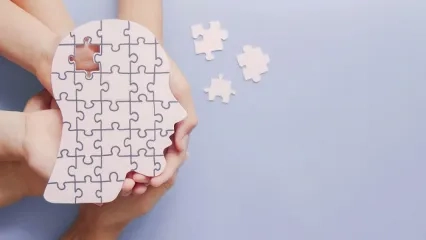Alo Yeditepe
Alo Yeditepe
The Use of Botox in Neurological Diseases
Although the use of Botulinum Toxin, commonly known as Botox, is well-known for aesthetic purposes, it has also been used for a long time in the treatment of neurological diseases. Neurology Specialist Dr. Öğr. Ü. Halide Rengin Bilgen Akdeniz explained that this method is used today in the treatment of migraines, cerebral palsy, dystonia, and many other conditions. She particularly emphasized its benefits in treating involuntary muscle contractions.
Botulinum toxin is a neurotoxin protein produced by the bacterium Clostridium botulinum. This toxin temporarily prevents muscle contraction by inhibiting the release of a molecule called acetylcholine from the nerve endings at the neuromuscular junction, thereby disrupting nerve-muscle communication mediated by acetylcholine. Consequently, it weakens the treated muscle for a certain period. Due to this property, Botulinum toxin is used in neurology for conditions such as spasticity, dystonia, and spasms, where involuntary and excessive muscle contractions occur, leading to neurological symptoms, as explained by the Neurology Specialist at Yeditepe University Hospitals.
In Which Areas Is Botox Used?
Our specialist mentioned that Botox was first used for therapeutic purposes in humans in 1980. "It received FDA approval in 1989 for neurological conditions such as blepharospasm and hemifacial spasm. Since then, its use in various neurological conditions has rapidly increased," she said. She provided the following information on the subject: "Spasticity is a condition characterized by excessive involuntary muscle contractions, where the muscles are tight and stiff, making movements difficult. It can occur in many conditions that cause damage to the brain and spinal cord, such as stroke, multiple sclerosis, and trauma.
Dystonia is another type of involuntary, repetitive muscle contractions that are not under the person's control. It can appear in isolation or as part of some neurological diseases. There are many types of dystonia, which can be widespread or affect specific body parts, such as blepharospasm when it occurs in the eyelids, cervical dystonia in the neck, and extremity dystonias in the arms and legs. It is also used in involuntary muscle contractions on one side of the face, known as hemifacial spasm, and in involuntary teeth grinding, known as bruxism.”
What is Migraine Botox? How is Migraine Botox Administered?
Despite not being directly related to muscle contractions, our expert pointed out that botulinum toxin has long been used in the treatment of migraine headaches. "It has shown effectiveness in the treatment of migraine headaches and is one of the treatment methods applied in migraines. There are various treatment methods for migraine headaches, such as regular medication use orally or by injection at specific intervals. The appropriate treatment will be determined by a neurologist based on a detailed evaluation of the individual's headache."
Is Neurological Botox Permanent?
Our expert continued explaining that Botox application involves using finer needles for small muscles through intramuscular injection. "To assess the degree of muscle contraction, electromyography is occasionally used to monitor muscle contractions. Multiple injections may be required at various points within the same muscle. Due to minor injection marks, there are usually no issues, allowing individuals to resume their daily activities on the same day. The effect typically lasts around 3-6 months, with injections not repeated more frequently than every 3 months."
About
Faculty and Year of Graduation:
İstanbul University Faculty of Medicine, 2002
”
See Also
- What is Parkinson's Disease? What are the Symptoms of Parkinson's Disease?
- Pudendal Nerve Compression
- Curiosities About Cerebral Palsy
- What is Epilepsy?
- School Stress Invites Sleepwalking
- Daughter-in-Laws Care for Alzheimer's Patients
- Recommendations From The Expert For Migraine Patients
- As Insomnia Increases, Its Harmful Effects on the Immune System Also Increase
- 8 Tips for Better Sleep
Alo Yeditepe




